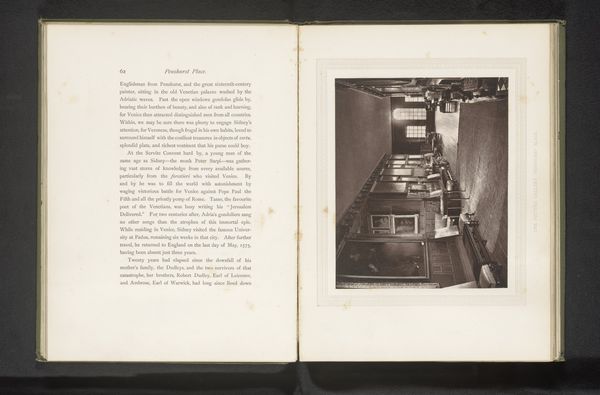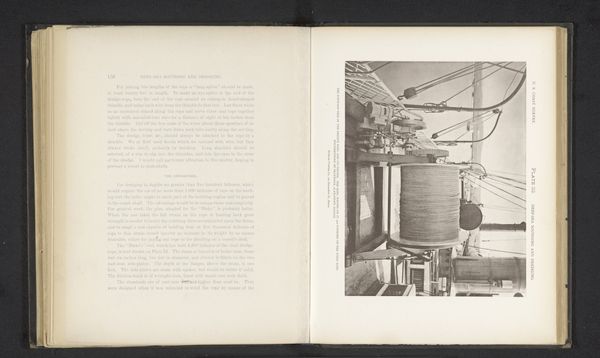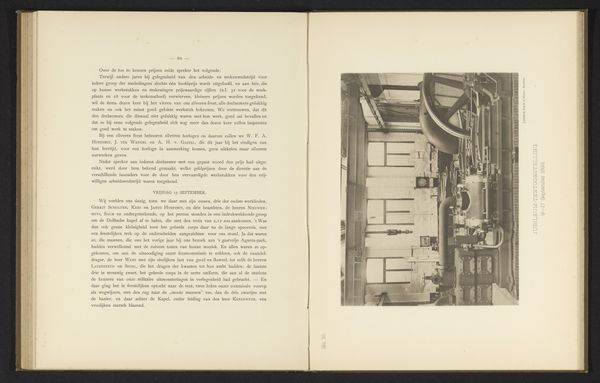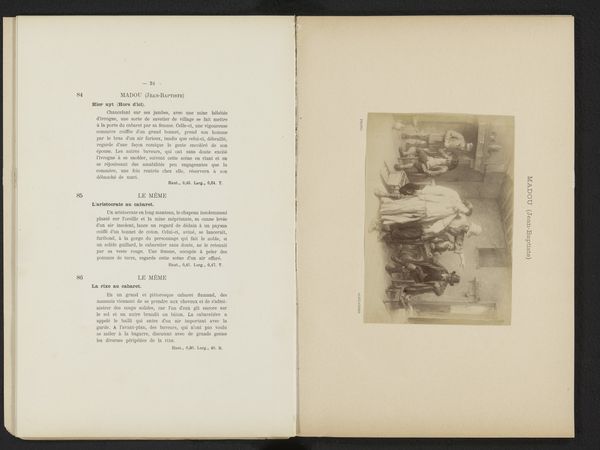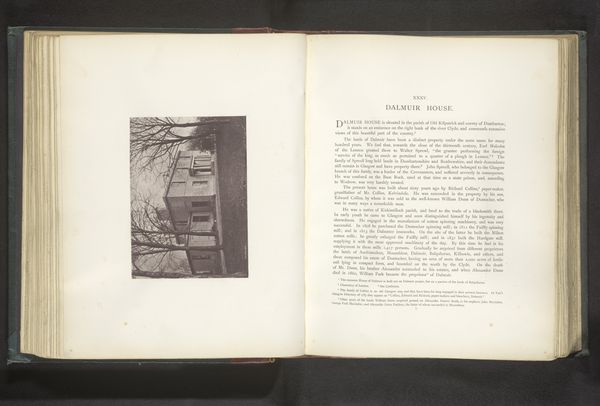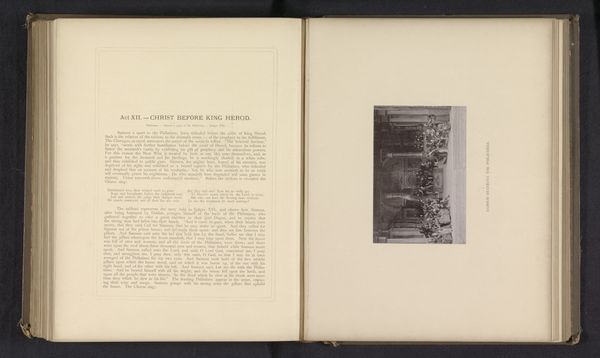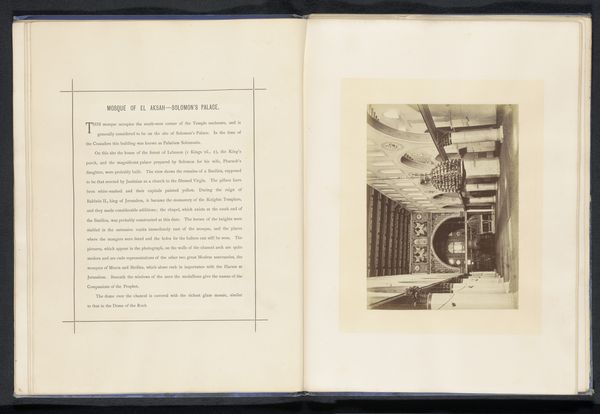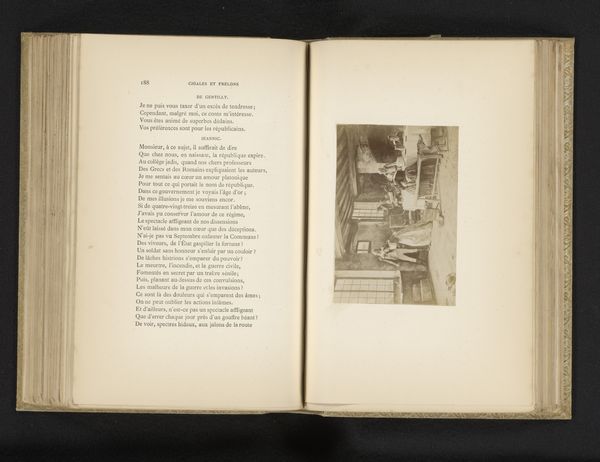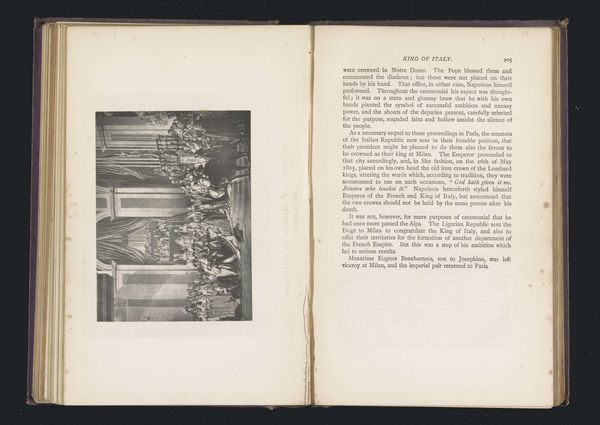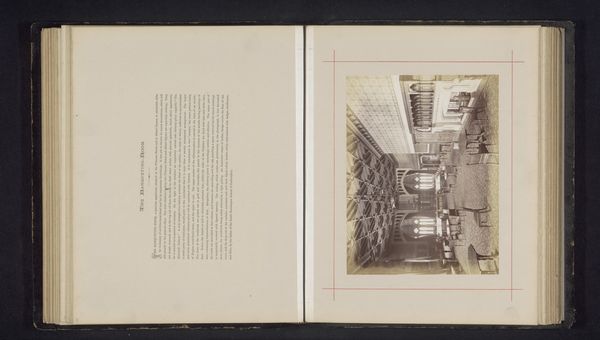
print, photography, albumen-print, architecture
# print
#
photography
#
islamic-art
#
albumen-print
#
architecture
Dimensions: height 155 mm, width 206 mm
Copyright: Rijks Museum: Open Domain
Curator: I’m completely drawn into the image's almost sepulchral feeling; a hushed stillness seems to emanate from its depths. Editor: Indeed. We're looking at an albumen print from around 1870 to 1875, an interior view of the Dome of the Rock on the Temple Mount. It appears to have been taken by or under the supervision of Horatio Herbert Kitchener. Curator: There’s a certain timeless quality, though it speaks to the past. All those columns, rising towards unseen heights. I sense profound history, layered and intricate. What a weight they seem to carry, physically and metaphorically! Editor: The albumen process would have been quite involved: coating paper with egg whites, sensitizing it with silver nitrate, exposing it, washing, toning... quite a chemical dance, reflecting both artistry and the constraints of available materials and labour at the time. I bet it required patience as thick as those stone supports. Curator: Yes, the materiality is part of the message! One imagines those creating this space—artisans, architects— pouring intention and deep cultural and personal dreams into the ornamentation. Look at how that labor echoes, creating a physical echo that ripples into now. Editor: Exactly. The materials themselves carry symbolic weight. The types of stone chosen, how they reflect light, the colors, and textures would have all communicated specific meanings. Curator: There’s a ghostly air around the columns as the sun pierces down—as if they're holding memories. How long has it been a sacred spot? Centuries upon centuries... all gathered together and immortalized in a physical format thanks to those silver particles on paper. I wonder at it all; those artists creating and leaving traces in it… even Herbert Kitchener capturing a mere frozen echo. Editor: The act of photographing also transformed the space, distilling its essence for dissemination, commodifying the experience, almost. How has photography aided its meaning or its use through history? Curator: We are forced to ponder not just how spaces are crafted, but also how meaning and art forms influence—perhaps shift—beliefs when captured and shared. Editor: It is worth observing the role the act of material depiction can play when approaching understanding history and places across space and time.
Comments
No comments
Be the first to comment and join the conversation on the ultimate creative platform.
